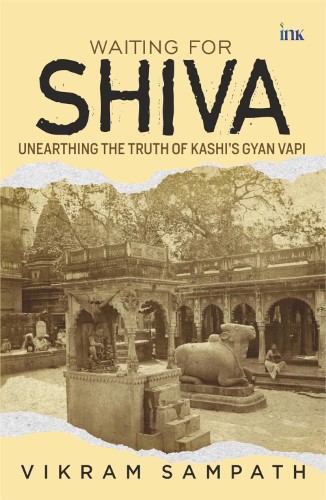Few places in the world carry the heavy burden of history as effortlessly as Kashi, or Varanasi, has. The holy city embodies the very soul of our civilization and personifies the resilience that we have displayed over centuries in the face of numerous adversities and fatal attacks.
Waiting for Shiva: Unearthing the Truth of Kashi’s Gyan Vapi recreates the history, antiquity and sanctity of Kashi as the abode of Bhagwan Shiva in the form of Vishweshwara, or Vishwanath. Shiva himself assured his devotees of salvation if they leave their mortal coils in the city. The book delves into the history of this self-manifested swayambhu jyotirlinga shrine of Vishweshwara, which for centuries has been both a refuge for the devout and a target of the bloodiest waves of iconoclasm. However, each time an attempt was made to obliterate the temple by demolishing it, it managed to rise and prosper. Every iconoclastic storm was followed by an episode of persistence, tenacity and stubborn resolve. Shrines fell and shrines rose, but the Hindus of Kashi never gave up—not even once.
Waiting for Shiva documents these cataclysmic events in the temple’s history. The final death blow was dealt in 1669 by the Mughal despot Aurangzeb, who demolished the temple and erected few domes on the partially destroyed western wall to call it a mosque. The temple complex was desecrated and left strewn with ruins as a grim reminder of the humiliation and insult that Hindus had to face as a consequence of their holiest shrine being torn down to smithereens. The area that is now called the Gyan Vapi mosque and the surrounding land that lies adjacent to the new temple of Vishwanath, which came up towards the end of the 18th Century, has always been one of intense contestation. Bloody riots overran Varanasi over this issue multiple times in the past. During the colonial era, the doors of the British courts were knocked at to settle the occupancy issue, and they adjudicated the matter several times. Post Independence, too, the desire to ‘liberate’ the complex has been seething in the Hindu imagination. A new suit filed in 2021 before the Varanasi civil court reopened a long festering historical wound. Despite several appeals right up to the Supreme Court to dismiss the plaint, a survey by the Archaeological Survey of India (ASI) was ordered, which would lay bare the truth in its findings by the end of 2023.
Vikram Sampath’s latest offering retraces the long history of this bitterly disputed site and the dramatic twists and turns in the checkered past of this hoary shrine. Piecing together numerous documents and accounts—Vedic and Puranic texts, Sanskrit literary sources, Agama shastras, Jataka tales, Persian accounts, travelogues of foreigners, archival records and copious legal documents detailing the contestation from the British era to modern Indian courts—the book recreates, for the first time with facts and cogent arguments, this stormy history right up to the present times. The long suppressed secrets that lay hidden in Gyan Vapi finally finds a voice through this book.




Reviews
There are no reviews yet.